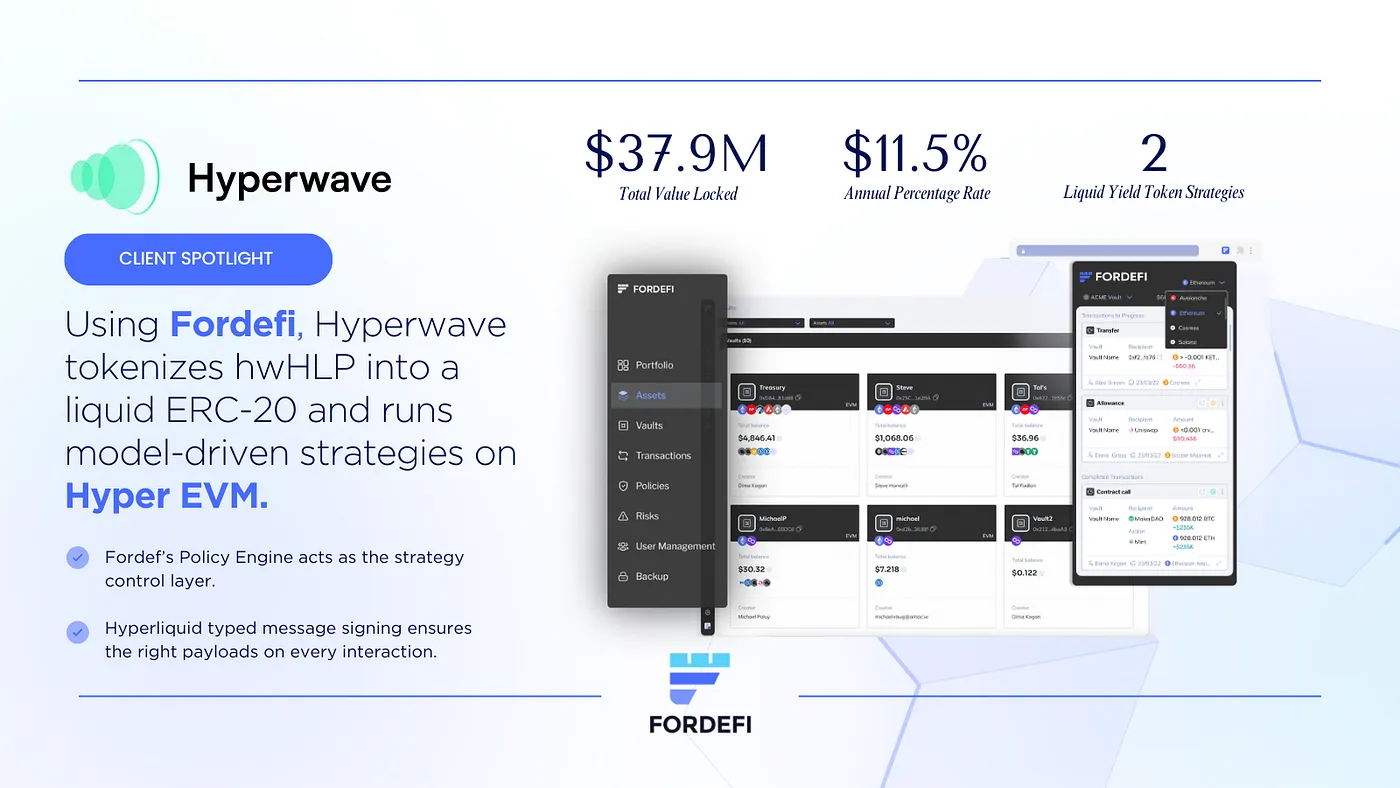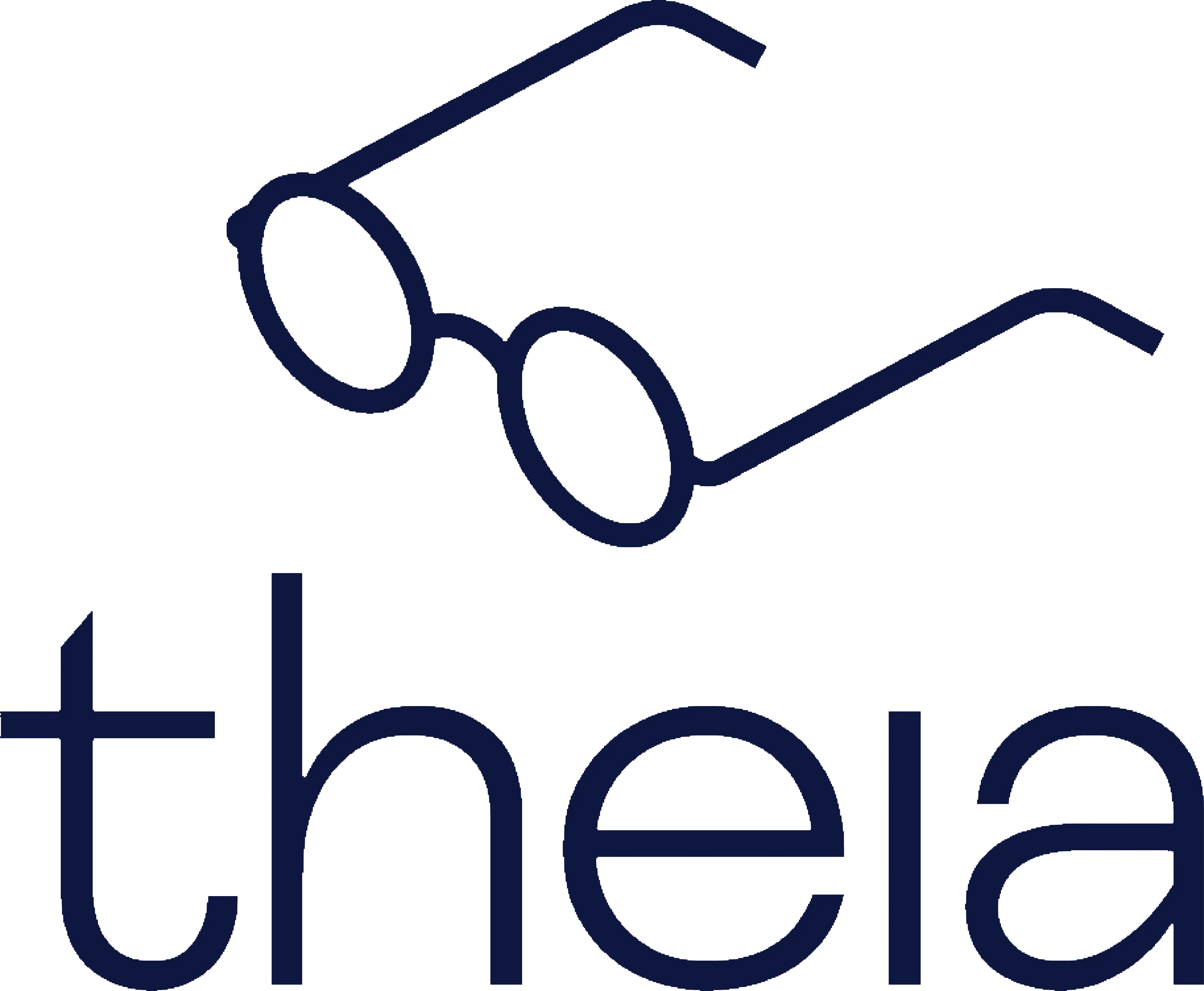How Hyperwave Builds Hyperliquid-Native Strategies With Fordefi’s MPC Wallet
Hyperwave is a Hyperliquid-native team from the builders behind Swell. The group shipped two products in quick succession and needed an execution environment that could keep pace with strategy design.

We wanted something more flexible than a smart contract and safer than an EOA. Fordefi gives us the policy controls and approvals we need, and it still feels fast.
The first release, HWHLP, tokenizes deposits into Hyperliquid’s HLP vault so users can hold a liquid ERC-20 that tracks HLP performance. HLP functions as the liquidity provider of last resort on Hyperliquid, helping the exchange backstop larger positions and list longer-tail assets when order book depth is thin. HLP has a four-day lockup. HWHLP removes that friction by providing instant liquidity and a liquid wrapper that can plug into DeFi across Hyper EVM and Ethereum. Users mint on Ethereum mainnet while Hyperwave routes and executes in the background, converts stables to USDC with minimal slippage, deposits into HLP, and reflects yield in the token’s share price. Holders can take HWHLP into Hyper EVM and, on mainnet, into Pendle to fix or lever yield and into Euler to borrow against it.
The second release is a machine-learning vault that allocates across Borrow and Lend markets, with options and delta-neutral strategies on the roadmap. To run that playbook, Hyperwave looked for an execution partner.
The Challenge
Hyperwave wanted to keep LP capital usable in DeFi while standing up an active, model-driven vault on Hyper EVM. Those goals set two clear requirements for the platform that would power execution:
- Policy engine as the strategic control layer. Treat Fordefi as the execution environment. Use policy as the primary capability to run the optimizer today and expand into options and delta-neutral flows without the rigidity of a smart contract or the exposure of an EOA.
- Hyperliquid-native typed signing. Ensure EVM typed message signatures for Hyperliquid are supported and configured correctly so every interaction signs the right payloads.
Why Hyperwave chose Fordefi
Policy engine for strategy guardrails
Hyperwave writes rules at the method and token level. Small rebalances and routine interactions auto-execute after simulation. Anything outside the limits routes to a multi-review flow. Strategy code stays flexible, and governance stays intact.
Hyperliquid typed message signing
Fordefi supports EVM-typed signatures for Hyperliquid. Traders sign the right payloads from desktop or phone without exposing a raw private key.
DeFi connectivity in one workspace
The browser extension connects to Hyperliquid and the broader EVM ecosystem. Operators see balance deltas, allowance changes, bridge routes, and gas before submit. Risky calls get flagged or blocked.
Mobile MPC approvals
Approvers can review and sign from their phones. The team keeps speed in live markets without plugging a hardware wallet into every desk.
Institutional-Grade Customer Support
Fordefi’s 24/7 CS team meets with Hyperwave to review setup and surface features that matter on Hyperliquid. Requests flow into product with clear next steps.
Early results
HWHLP gives users a liquid form of HLP yield that they can put to work across DeFi. On day one, that includes Pendle and Euler on Ethereum. On Hyper EVM, the ML vault’s optimizer already tests allocations across markets and will expand into options and delta-neutral flows. Fordefi’s policy engine and approvals keep every move inside defined risk limits.
How the collaboration works
- Hyperwave defines vault-specific rules by address, asset, method, and notional.
- Traders connect the Fordefi extension to Hyperliquid and Ethereum.
- Simulations and data previews surface the impact of each call.
- Routine actions clear automatically. Exceptions route to reviewers.
- Approvers use mobile MPC to sign from anywhere.
The road ahead
Hyperwave will continue working with Fordefi’s customer success team to refine its Hyperliquid setup and expand strategy coverage. As TVL grows, the team plans to explore embedded access to centralized venues for basis trades from the same workspace. Feature requests are already in motion, with priority routed through CS to product.
For strategy teams building on Hyperliquid, Hyperwave shows how MPC custody, method-level policy, and typed signatures combine to unlock liquid LP yield and ML-driven execution without giving up control.



























